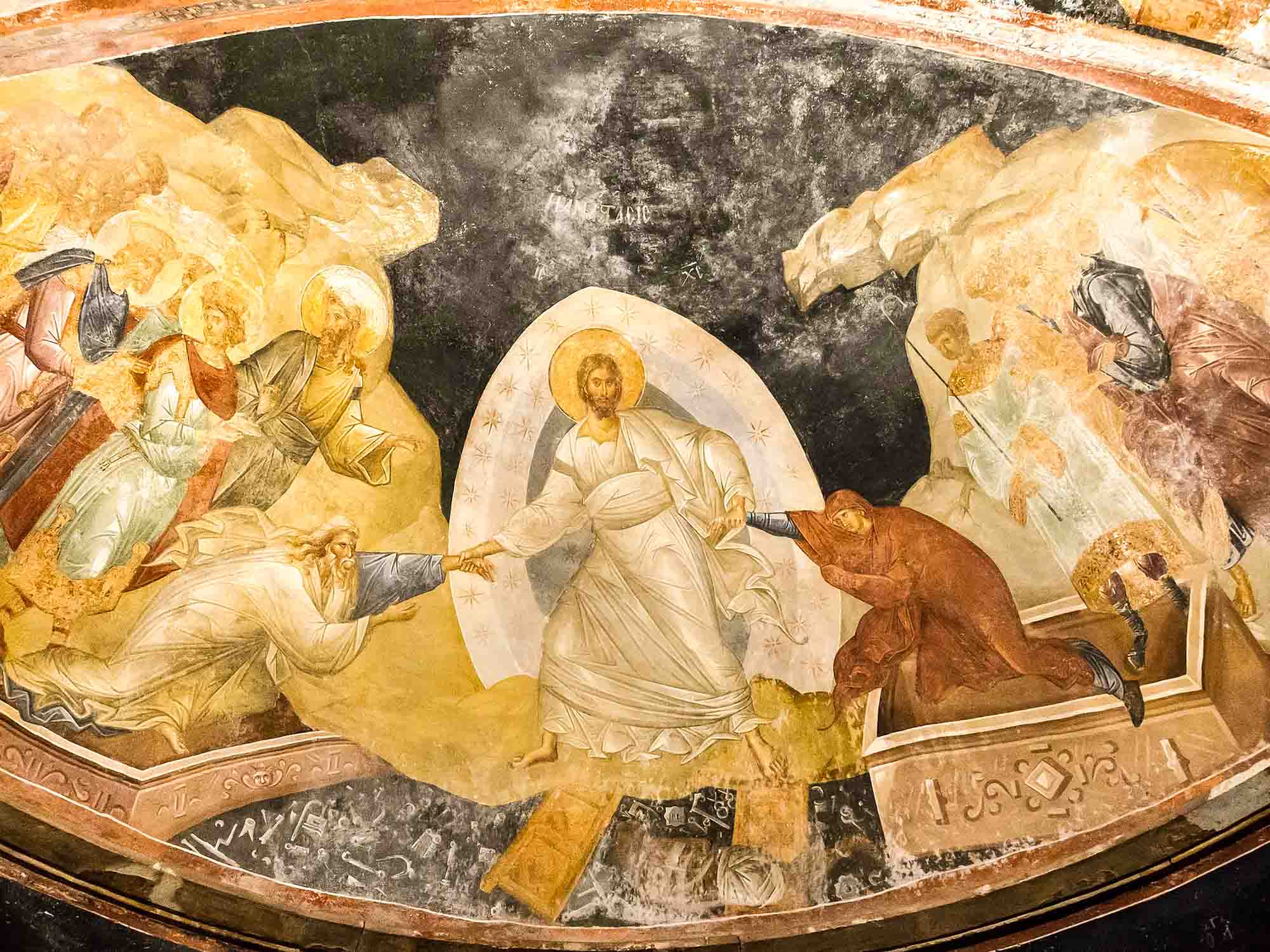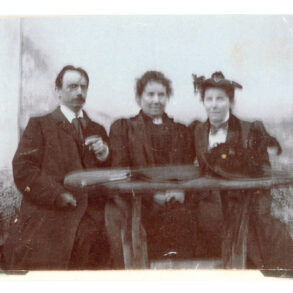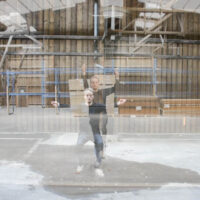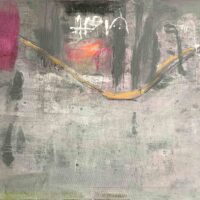Christ appears twice at Easter: first to the dead, then to Mary Magdalene; first at night, then during the day; hidden in the apocryphal texts and revealed in the Gospels. Experiencing Easter means taking both appearances together, it means putting the Easter Vigil alongside Easter morning.1
During a stay in Instanbul in 2015, I visited the Chora Church in the Edirnekapi district on my last day. This church, on the foundations of an old monastery church, was decorated between 1316 and 1321 with precious mosaics and frescoes from the Gospels about the life of Jesus and Mary. All this would be well worth a thorough study. For me, the overwhelming experience was the large fresco in the half dome of the southern apse at the end of my tour. This fresco depicts the appearance of the risen Christ in the underworld, limbo, whose gates he broke open to take the poor souls unto himself, as reported in the apocryphal Gospel of Nicodemus (thus not included in the New Testament).
When I stood before/underneath it, I could almost feel the forces with which the risen Christ takes hold of Adam and Eve to lead them out, to redeem them. The apocryphal Gospel of Nicodemus describes it like this: «Then a mighty voice rang out, speaking like thunder, saying: ‹Open your gates, O princes; be lifted up everlasting gates! The King of Glory will enter in.›» To the question, «Who is this King of Glory?» the angels of the Lord replied: «A mighty and powerful Lord, a Lord mighty in war!» And at the same time the gates of brass were shattered, and the bars of iron were broken, and the dead who were bound were all released from their bonds […] And the King of Glory came in like a man, and all the dark corners of Hades became light. […] Then the King of Glory stretched out his right hand, took hold of the forefather Adam and raised him up. Then he turned also to the rest, and said:2Come unto me, all of you […] For behold, I awaken you all again by the wood of the Cross.› Thereupon he let them all out.»2 Eve is not mentioned here.
Do Not Touch Me
The second picture experience I had was in Florence in 1988, almost a quarter of a century earlier. During the visit to the monastery of San Marco, the frescoes of Fra Angelico. In one of the monks’ cells is the scene which, according to the report in the Gospel of John, gave this account its name: the «noli me tangere» of the risen Christ. Following the Gospel of John, the fresco shows Mary Magdalene, filled with pain, witnessing the empty tomb on Easter morning. She then sees the risen Christ, does not recognise him and thinks he is the gardener, and asks him where the beloved dead man is. When he then addresses her as Mary, she recognises him and wants to take his hand, but he says to her in the Latin version of the Gospel of John, «noli me tangere – do not touch me» or «do not hold me».
These two images provide the basis for the following reflections on the events of the Easter Vigil and Easter Morning. In doing so, I include the dramatic representation of both events in the ‹Innsbruck Easter Play›.
I see polarities in these two images:
- Night – Day
- Spiritual world – Earthly world
- Sought spiritual touch – Refused spiritually bodily touch

So the events depicted in the two images belong together as part of Easter morning, even if the first, which I have called the night scene, is only known today because it is included in the Apostolic Creed: «descendit ad inferos», «descended into hell (actually into the underworld), risen again from the dead on the third day.» And in Paul’s letter to the Ephesians 4:9 it says in Emil Bock’s German translation [translated here into English]: «That he has ascended, is it not the same as that he has descended into the lowest layers of the earth? The one who descended is the same as the one who ascended higher than all the heavens; he wanted to fill all existence with his being.» In 1 Peter 4:6 it says that the «good news was proclaimed to the dead.»
Because this part of the event of the Resurrection is apocryphal, it was later even banned by the Catholic Church and put on the Index. In the visual arts, of course, it is very often a theme in the Western and especially in the Eastern Church. There it is the quintessential Easter image – not the crucified one. Rudolf Steiner comments on Christ’s descent to the dead and its significance for us today as follows: «It is rightly said that after the event of Golgotha, Christ descended to the dead, to the spiritual world, in order to bring them the word of salvation. The Christ event is still at work now in the same respect. Therefore it doesn’t matter whether the human being still lives here in the physical earthly world or whether they have already died: they can still experience the Christ event in the spiritual world, provided they have created an understanding of it here on earth.»3 Steiner admittedly refers to «spiritual world», but nevertheless says «descended». Thus, he does not use the traditional formulations of limbo, hell or underworld either.
The Doctrine of Salvation as a Play
The devout Christians of the Middle Ages had a great need not only to see the salvation-historical event of the Resurrection in frescoes and mosaics in the churches and to hear it in the sermons, but also to see it as a dramatic event in front of the church or on a stage. The Church refused for a long time to let the Saviour appear as a figure. This is understandable in a way. And yet the need for ‹visualisation› prevailed.
For this purpose, let us look at the depiction of the passage to the underworld according to the Gospel of Nicodemus in the ‹Innsbruck Easter Play›.4 This Easter play was created at the end of the 14th century and brings the biblical Easter event surrounding the resurrection of Jesus Christ onto the stage. It contains the two scenes that belong to our topic. In the prologue, the spectators are asked to watch this play with decorum. This was quite justified, for the extensive play about the ointment maker that is inserted gives occasion for laughter and thigh-slapping: insults and fights between the servants of the ointment maker – a very earthly preparation for the great event of the appearance of the risen Christ. The scene in the world of the dead shows considerable extensions to the text of the Gospel of Nicodemus.
The Gospel of Nicodemus in the ‹Innsbruck Easter Play›
Jesus speaks: You Lords of the Dark,
So pitifully you cry.
Unlock the gate immediately:
the King of Power and Glory stands before it!
[…]
Hereupon Jesus shatters the gate of hell.
The evil spirits wail, Jesus speaks:
Now come, my much beloved children, you who have come from my Father.
Forever shall you with me
possess my Father’s kingdom.
Adam speaks:
Happy am I, today and forever!
Happy am I for these glad tidings!
I see the one who created me in heaven and on earth.
Welcome, dear Father Jesus Christ! […]
Have mercy on me today, dear Lord, I beg of you!
He sings:
Come, you blessed of my Father,
take possession of the kingdom prepared for you
from the beginning of the world.Jesus speaks:
Well, dear Adam, what happened to you?
Who gave you the evil counsel
that you broke God’s commandment?
Adam speaks:
Dear Lord, let me tell you this:
the evil devil deceived us
he came to Eve like a
snake.
He said: This is the best food,
you must eat it, then you will become wise!
Eve speaks:
When I took the apple
from the tree on which it hung –
the curse was spoken there and then
which women still have to bear:
Now many a soul must suffer
torment and affliction in the fires of hell.
Jesus speaks:
Now come, my much beloved children,
you who have come from my Father, into my Father’s kingdom
that is prepared for you forever more!

Now comes the second part, the scene on Easter morning with the encounter between the risen Christ and Mary Magdalene. First of all, back to the pictorial representations of this Easter morning scene. I confine myself to two depictions that are particularly touching in their delicateness: In Fra Angelico still the gardener, in Giotto the risen Christ with the flag of victory.
It may seem bold to attach the following thought to Fra Angelico’s depiction: We see a beautiful enclosed garden, a garden of paradise. Do the new Adam and the new Eve meet here and does this mark the beginning of a new beginning for human history – just as it began for the dead in the spiritual world through the risen Christ? There are arguments in favour of such a view. Paul writes in 1 Cor. 15:45–47: «And so it is written, the first man Adam was made a living soul; the last Adam was made a quickening spirit. Howbeit that was not first which is spiritual, but that which is natural; and afterward that which is spiritual. The first man is of the earth, earthy: the second man is the Lord from heaven.»
We speak in this context also of the risen Christ, also of the new Adam. And for the Church Fathers Augustine, John Chrysostom and Cyril of Alexandria, Mary Magdalene was the new Eve and at the same time the first messenger of Easter. How does the ‹Innsbruck Easter Play› dramatically portray Easter Morning?
Mary Magdalene is mentioned in all four Gospels on Easter morning. Both in the Gospel of Matthew and in the Gospels of Mark and Luke she is Mary Magdalene, one of the women who finds the empty tomb of Christ on Easter morning (Mt 28:1–10; Mk 16:1–11; Lk 24). The episode described in the Gospel of Luke (Lk 7:37–38), according to which a sinner washes Christ’s feet with her tears and dries them with her hair, was also related to Mary Magdalene. She is obviously the one who is meant in our Easter play. The first, the old Eve who is redeemed? This reinterpretation began with the sermons on Mary Magdalene of Pope Gregory the Great (590–604): in them, Jesus’ healed woman from Magdala (Lk 8), who is one of his followers, merges with the nameless sinner who anoints Jesus’ feet in Luke 7:36–50, and with Mary of Bethany, the sister of Martha and Lazarus, who also anoints Jesus’ feet.
Traditionally, however, she is the sister of Martha and Lazarus (John) because in the Gospel of John she has this special encounter with the risen Christ, this experience of «noli me tangere». The Easter play, however, chooses a different characterisation of this person, a mixed form of the Magdalenes.
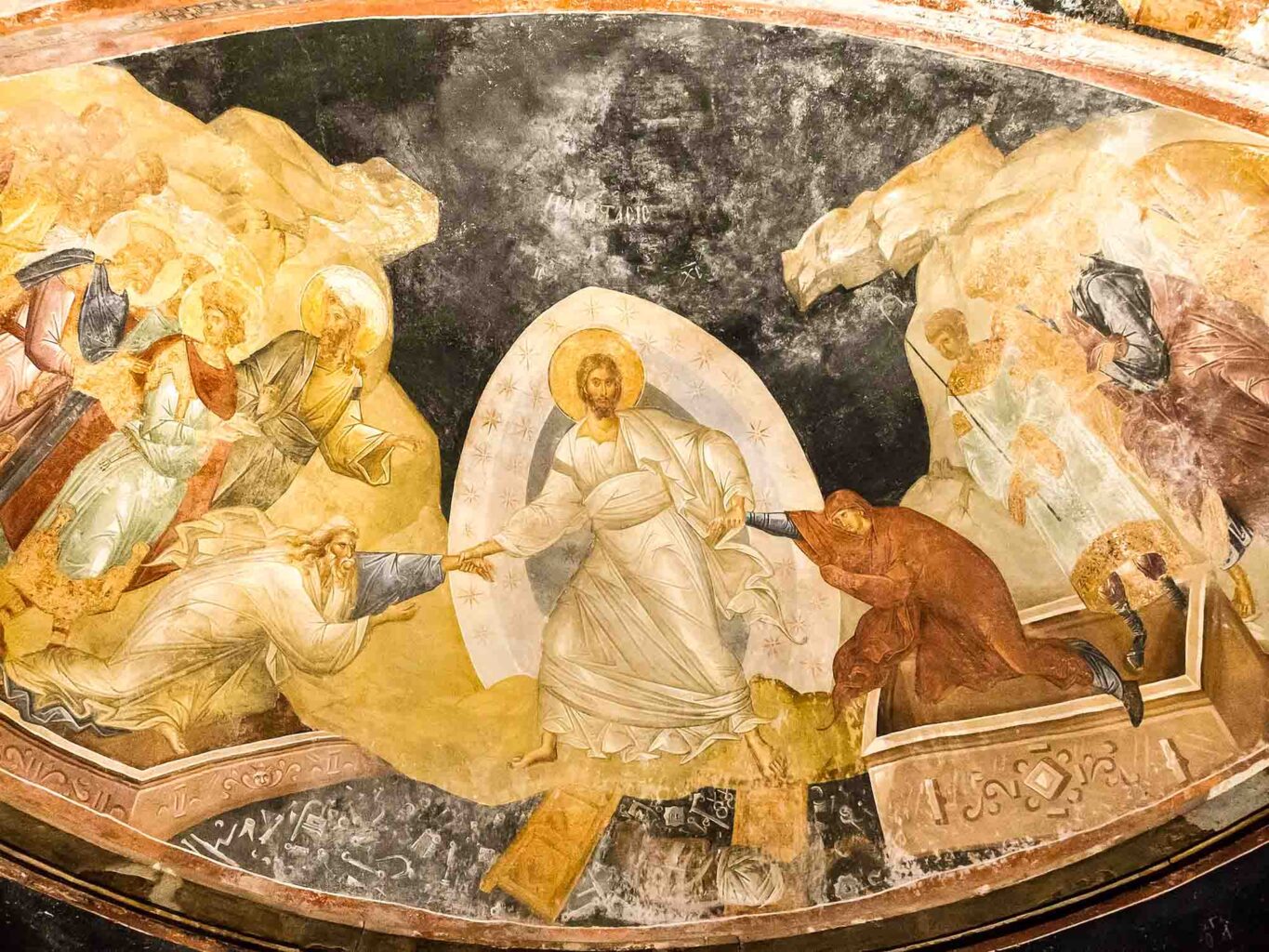
The Gospel of Nicodemus in the ‹Innsbruck Easter Play›
Mary sings:
The tomb was empty! O woe is my days!
Where is now my consolation,
he who has redeemed me from my sins?
He who forgave me my sin,
I saw him laid in a tomb.
[…]
Similarly she sings:
The stone that was put there as a sign
has verily been rolled away.
They had occupied the place with soldiers:
empty is the place and they are gone.
Then Jesus appears in the form of a gardener and sings:
Woman, why are you crying?
Whom are you searching for?
Mary sings:
Lord, if you have taken him away,
tell me where you have put him
and I will take him with me.
Jesus speaks:
Does it befit good women
that they go around like servants
so early in this garden?
Whom do you look for here?
Mary speaks:
Why are you calling me?
I am looking for the holy man
whom the Jews have slain.
Can’t you tell me anything about it?
Jesus speaks:
Truly, he must be dear to you,
that you torment yourself so!
Mary speaks:
Say, good gardener,
for the sake of all women’s esteem,
have you heard anything about him? Tell me,
it shall be to your advantage!
Jesus speaks:
Good woman, I tell you in friendship:
keep seeking your Lord!
Mary walks on and sings:
The pain grows, I tremble inside
at the disappearance of my good Lord,
who healed me, the sinful one,
seven devils he cast out of me.
[Merger of Luke 7 and 8: sinner and the apostle Mary of Magdala]
[…]
[Transformation: Jesus appears with the flag as in Giotto, Mary must have turned during the transformation of both].
Jesus with the flag, Mary sings:
O the salvation of Israel,
how he has patiently endured death!
Similarly she sings:
Oh Saviour of all Christendom,
why do you suffer bitter death so patiently?
Jesus sings: Mary!
[There she must have turned again].
Mary sings:
Rabbi! Rabbi! That means: Master.
Jesus sings:
The first garment, of course,
only brought you physical help
in that it could only show itself
in an ordinary and natural way. […]
[He thus indicates his other, new body]
Jesus sings:
This form is not like the earlier one,
this one is indestructible.
Then it was still capable of suffering,
it can no longer be destroyed.
Rudolf Steiner says in this connection that there arose «from the tomb the pure phantom of the physical body, with all the characteristics of the physical body. […] If we think of the body of Christ risen from the tomb, we can picture for ourselves: just as the bodies of earthly human beings, in so far as they have the decaying body, are descended from the body of Adam, so the spiritual bodies, the phantoms of all human beings, are descended from that which rose from the tomb.»5
The Gospel of Nicodemus in the ‹Innsbruck Easter Play›
Mary sings:
Holy one, strong one!
Jesus sings:
So then, do not touch me (Ergo noli me tangere)
and do not lament any longer
over him whom you will soon see
ascending to the Father in pure light.
Mary sings:
Holy one, immortal one,
have mercy on us!
Jesus speaks:
Peace and mercy be upon you!
You never wanted to turn away from me,
that is why you had the good fortune
to be the first to see me.
Mary goes back and sings:
Truly I saw the Lord alive before me.
Turning and Opening Your Eyes
In conclusion, let us take a look at a modern view of «noli me tangere» which goes together with the representation in the ‹Innsbruck Easter Play›. Here, too, she walks past him. ‹Magdalena am Grab› (Magdalene at the Tomb) by Patrick Roth:6
It is his view of the resurrection, of Magdalene at the tomb. I will begin by summarising his text and then quote it in parts: She comes to the tomb, it is empty. She turns, goes back to the disciples. Turns again, goes back to the tomb. The angels say to her: Why are you weeping? She turns. This is the third turn: she sees someone she does not recognise, although he addresses her: Jesus.
So, and now the moment the Bible skips over: Magdalene passes by him. There must have been a moment here – in this passing – when both Jesus and Magdalene stood facing away from each other. He is looking into the tomb where she – the one passing by – had been standing in front of him just a moment ago. And she, her back to him, stood searching. They stood facing away from each other. And what does that mean? […] For whom do the two stand – turned away from each other, without sight of each other? God and human being – this is the moment – no longer see each other. Stand apart. But now: now something turns. For it is only when Magdalene passes by that Jesus turns around. He turns around towards her. He must have turned when he spoke her name: ‹Mary›. Here – only at this naming (a baptism) – does the Bible resume and say that Magdalene turned. It is the fourth and decisive time that she turns and in this turning: is transformed […].
That is to say, she is transformed from one who no longer knew him, only sought the dead one as alive, was ‹dead› to him, into one who recognises him – ‹gives birth› to him for the second time: for only here, in the eyes of this physically seeing woman, is he born, as the risen Christ now. And thus Magdalene herself becomes a resurrected woman – in this her moment of awareness.
But he, too, has been transformed in this moment of recognition: he is no longer the dark God who does not make himself known, who stood as a stranger before her, then turned away from her, but now he is the recognised one. And only in this – through this her moment of recognition – has Magdalene also risen.
Jesus himself, this is so important, and it is precisely this that has been omitted, skipped over in this passage: Jesus himself is someone ‹who has turned›. He turns – even before Mary of Magdala turned.
She forces him to do so. In what way? Through her ‹absence›, that is, through passing by her goal she forces him – or he allows himself to be forced – to turn around. But how does she pass? She passes in a feeling-searching way. And in this she is always connected with the goal of her search, even in the error, in going wrong itself. God changes, this image says, through our seeking Him, even through our passing by Him: namely He changes in order to turn towards us, in His desire to see, that is, to be consciously seen. The fourth turn of Magdalene – the decisive one – that is the Magdalene instant. […] Magdalene sees and is seen and he likewise: he sees and is seen.7
Translation Christian von Arnim
Footnotes
- This account is based on a lecture given by the author in the Engelberg branch of the Anthroposophical Society on the 6th of April 2022.
- Apokryphen zum Alten und Neuen Testament. Edited, introduced and annotated by Alfred Schindler. Zurich 1988, p. 534.
- Rudolf Steiner. GA 118, p. 151f.
- The Innsbruck Easter Play. Edited and translated by Rudolf Meier. Stuttgart 1962.
- Rudolf Steiner. GA 131, p. 167.
- Patrick Roth: Mulholland Drive: Magdalena am Grab. In: Ins Tal der Schatten. Frankfurter Poetikvorlesungen. Frankfurt 2002. p. 75–111.
- Ibid. p. 109ff.

